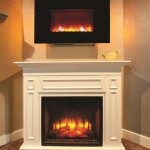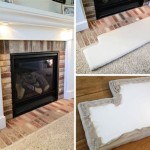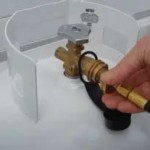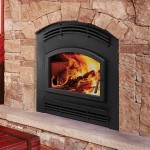What is a Vented Gas Fireplace?
A vented gas fireplace is a heating appliance designed to mimic the ambiance of a traditional wood-burning fireplace while utilizing natural gas or propane as its fuel source. Distinguishing it from ventless or vent-free models, a vented gas fireplace requires a chimney or flue system to safely exhaust the combustion byproducts produced during operation. These byproducts include carbon dioxide, water vapor, and potentially small amounts of carbon monoxide if the unit is not functioning optimally.
The primary advantage of a vented system lies in its ability to maintain a healthier indoor air quality compared to ventless alternatives. By directing the exhaust gases outside, the risk of indoor air pollution is significantly minimized. However, this venting process inherently reduces the overall heating efficiency of the unit, as a substantial portion of the heat generated is also expelled through the chimney or flue. The choice between a vented and ventless system hinges on a balance between air quality concerns and heating efficiency preferences.
Key Point 1: Venting System Requirements
The presence of a functional venting system is the defining characteristic of a vented gas fireplace. This system typically consists of either an existing masonry chimney or a designated metal vent pipe, often referred to as a B-vent or direct-vent system. The specific type and dimensions of the venting system are dictated by the fireplace manufacturer and local building codes. Adherence to these specifications is crucial for ensuring safe and efficient operation.
A B-vent system relies on natural draft to exhaust combustion gases, meaning it requires a vertical rise and termination point above the roofline. Direct-vent systems, on the other hand, utilize a concentric pipe design that draws combustion air from outside while simultaneously expelling exhaust gases. This design allows for greater flexibility in installation, as the vent can terminate through a side wall rather than requiring a vertical chimney.
Proper installation of the venting system is paramount. Any leaks or obstructions can lead to dangerous accumulation of carbon monoxide inside the dwelling. Regular inspection and maintenance of the venting system are therefore essential for ensuring its continued functionality and safety. It is recommended that a qualified HVAC technician or certified chimney sweep perform these inspections on an annual basis.
Key Point 2: Operational Characteristics and Aesthetics
Vented gas fireplaces offer a visual appeal akin to traditional wood-burning fireplaces, often incorporating realistic artificial logs and a glowing ember bed. The flame appearance is typically more vibrant and natural compared to ventless models. Many vented fireplaces also offer adjustable flame height and heat output settings, providing a degree of control over the ambiance and warmth generated.
Due to the venting requirement, vented gas fireplaces are generally less efficient than ventless models. A considerable portion of the heat produced is lost up the chimney or through the vent pipe. This can result in higher fuel consumption and operating costs. However, the improved air quality associated with vented systems often outweighs the efficiency trade-off for many homeowners.
The installation of a vented gas fireplace can be more complex and costly than a ventless unit, particularly if a chimney or vent pipe needs to be installed or modified. However, the long-term benefits of improved air quality and a more realistic flame appearance can justify the initial investment for those prioritizing these factors.
Key Point 3: Safety Considerations and Maintenance
While vented gas fireplaces offer enhanced air quality compared to ventless models, they still require careful adherence to safety protocols. A properly functioning carbon monoxide detector should be installed in the vicinity of the fireplace to provide early warning of any potential leaks. Regular inspection and maintenance of the fireplace and venting system are crucial for ensuring safe operation.
Professional servicing should be scheduled at least once a year to inspect the gas connections, burner assembly, and venting system. This service should include cleaning the burner assembly to remove any debris that could impede gas flow or combustion. The venting system should be inspected for any signs of blockage or deterioration, such as cracks or corrosion.
It is important to be aware of the potential for backdrafting, a phenomenon in which exhaust gases are drawn back into the dwelling rather than being expelled through the chimney. This can occur due to negative pressure within the home caused by exhaust fans or other appliances. Ensuring adequate ventilation and proper chimney height can help prevent backdrafting. If any unusual odors or symptoms of carbon monoxide poisoning are detected, the fireplace should be immediately shut off and a qualified professional should be contacted.
In summary, a vented gas fireplace is a heating appliance that provides the aesthetic appeal of a traditional fireplace while burning natural gas or propane. The key distinguishing feature is its reliance on a venting system to safely exhaust combustion byproducts, contributing to improved indoor air quality. Understanding the venting requirements, operational characteristics, and safety considerations associated with vented gas fireplaces is essential for making an informed decision and ensuring safe and efficient operation.
Gas Fireplace Venting Explained Heatilator

Vented Vs B Vent Direct Free Dixie S

What Is A Direct Vent Fireplace Fireplaces Learning Center

What Are The Best Ways To Vent A Gas Fireplace Zoroast
.aspx?strip=all)
Benefits Of Direct Vent Fireplaces Regency Fireplace S

Gas Fireplaces Direct Vent Vs Free Fine Homebuilding
Gas Fireplace Venting Explained Heat Glo

Benefits Of Direct Vent Fireplaces

Fireplace Cover To Keep Cold Air Out

Are Vent Free Gas Fireplaces Safe Ventless








